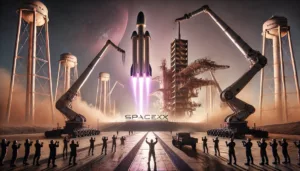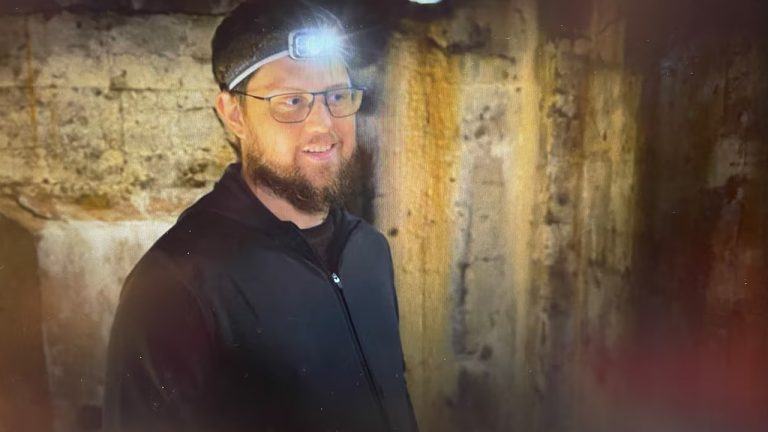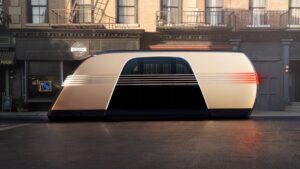The achievement marks a breakthrough in the company’s quest to develop fully reusable rockets for missions to the Moon, Mars, and beyond.
The dramatic feat occurred after Starship’s fifth uncrewed test flight, which launched from the Boca Chica starbase at 7:25 a.m. local time (1:25 p.m. BST). As the rocket’s 71-meter (233-foot) Super Heavy booster separated 40 miles (65 km) above the Earth, the upper stage continued to an altitude of nearly 90 miles. Traveling at 17,000 mph, it completed a loop around the planet before splashing down in the Indian Ocean as planned.
Source: SpaceX
Cheers erupted at SpaceX headquarters as the falling booster reignited three of its Raptor engines, decelerated, and maneuvered towards the “Mechazilla” launch tower. The mechanical arms, nicknamed “chopsticks,” successfully caught and secured the booster—a first for the company, signaling a major step towards fully reusable rockets.
Source: SpaceX
The Starship booster’s controlled descent and capture are critical to SpaceX’s long-term goal of developing sustainable space travel. It’s the first time SpaceX has executed the bold maneuver, which aims to eliminate the need for booster recovery in the ocean.
Meanwhile, the upper stage of Starship re-entered Earth’s atmosphere horizontally, its onboard cameras capturing a stunning plasma trail as it descended. With significant improvements to the rocket’s heat-shielding tiles, which were damaged during a previous test flight in June, this mission saw the spacecraft re-enter more intact.
Upon reigniting one of its six engines, Starship positioned itself upright for its final ocean landing. However, after splashing down in the waters off Australia’s coast, the ship toppled and subsequently exploded. It remains unclear whether the explosion was planned or the result of a technical issue, though Elon Musk confirmed that the ship “landed precisely on target!”
Space experts and astronauts lauded the accomplishment. Chris Hadfield, a Canadian astronaut, tweeted, “There was an enormous step forward in human capability today. Makes me even more excited for our collective future. Congratulations to all at SpaceX!”
SpaceX’s successful booster capture marks a significant advancement in space engineering, bringing the company one step closer to achieving its ambitious goals of interplanetary travel.
We, Robot
Today’s successful launch caps off a remarkable week for Elon Musk. Just days ago, Tesla’s “We, Robot” event in Burbank, California revealed a range of futuristic new technology.
The highlight of the event was Tesla’s unveiling of the Cybercab, a two-seater robotaxi designed to operate without a steering wheel or pedals, marking the company’s ambitious foray into autonomous urban transport. Priced under $30,000, with production slated for 2026, Elon Musk promised the Cybercab would bring down mass transit costs.
Source: Tesla
Tesla also showcased the Robovan, a larger autonomous vehicle capable of seating twenty passengers or transporting goods, aimed at reshaping public and commercial transport.
Source: Tesla
The Robovan features striking Art-Deco inspired design. Elon Musk said “the future should look like the future.”















